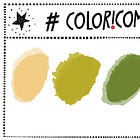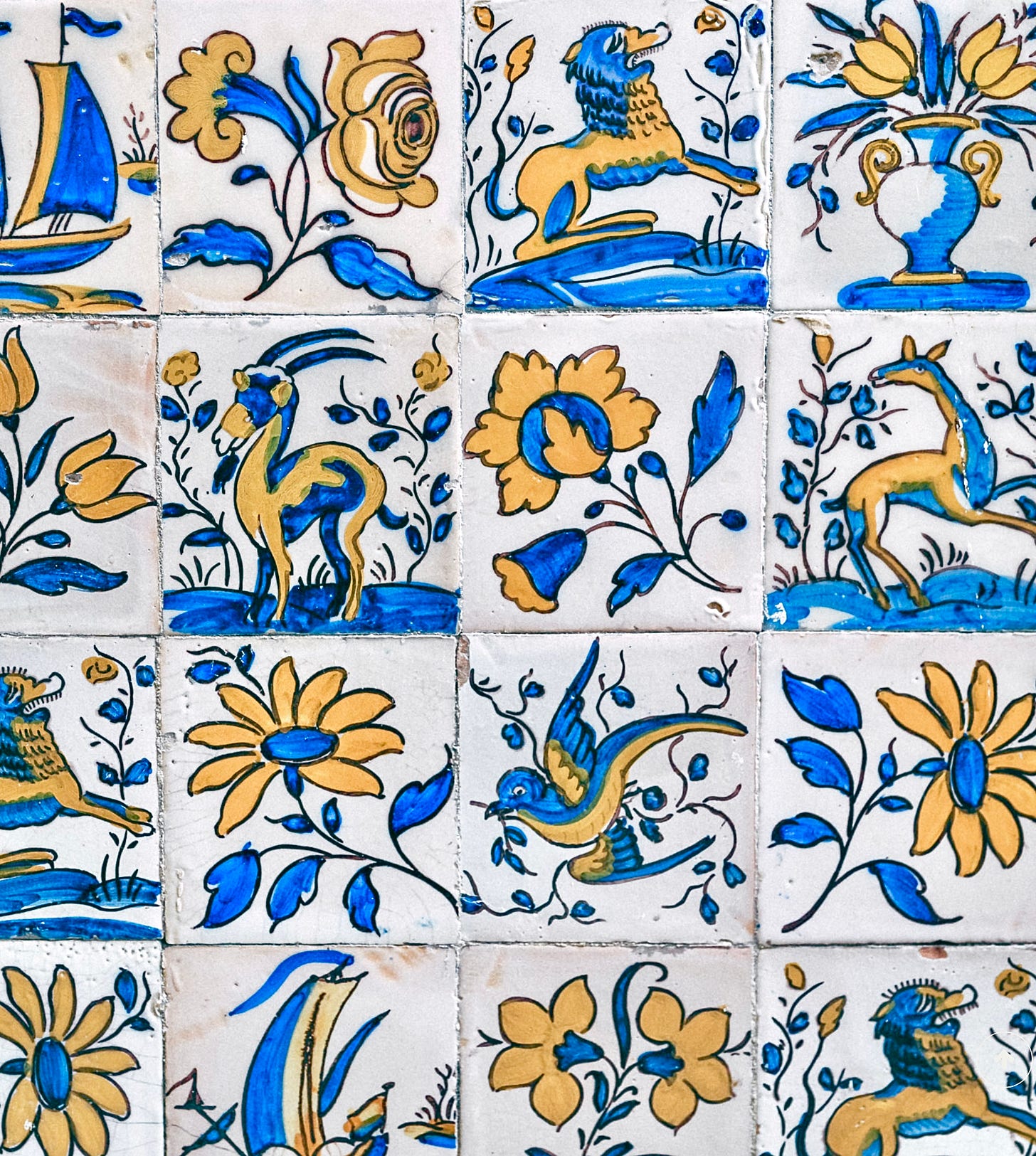Inspiration from Portugal
The colours for Week 26 are Mustard, Sunshine, Dodger Blue & Yale Blue
Bom dia! We are off to Portugal this week, and high on my list of priorities is a visit to Lisbon’s Tile Museum.You’ll remember the Wally Close post I shared a weeks ago from Glasgow.
In the coming days we’ll be doing some scouting around medieval towns like Obidos, Peniche beach and Porto before my Vibrant Horizons art retreat starts in Caséval later in July. I’m really looking forward to spending time with creatives making art in this inspiring country. A final reminder: Floral Fusion starts today, jump in quick if you’d like to join us on this popular, three week long course inspired by florals, botanical forms and colour moods.
On my travels I’ll be looking out for examples of one of Portugal's most recognised art forms: azulejos. These hand-painted ceramic tiles with their distinctive blue and yellow patterns represent over five centuries of artistic tradition and have transformed ordinary walls and buildings into outdoor galleries.
Azulejos originated in the 13th century and were based on Moorish decorations but they really became “Portuguese” in the 15th century. The word azulejo derives from Arabic al zulayka meaning ‘little polished stone’. Initially featuring geometric patterns, azulejos evolved during the 17th and 18th centuries when master artists created elaborate narrative panels depicting anything from biblical scenes to the seafaring nation’s maritime adventures.
Examples of these tiles can be seen on Lisbon's Metro where azulejos bridge traditional craftsmanship with modern design. Starting in the 1950s, artists like Maria Keil, who I featured in Week 39 of 2024, created abstract tile installations for metro stations. Each station features unique azulejo artwork reflecting the neighbourhood's character: Olaias displays geometric patterns in vibrant colours whilst Laranjeiras features nature-inspired designs. These installations prove azulejos aren't museum pieces but living art that continues evolving.
Beyond the metro, Lisbon offers spectacular azulejo displays and the National Tile Museum houses Portugal's most comprehensive collection, including a stunning 1,300-tile panorama of pre-1755 earthquake Lisbon. São Bento Station features magnificent historical panels depicting Portuguese life through the centuries, while the Palace of the Marquises of Fronteira displays some of the finest 17th-century tile work known of.
Azulejos remain deeply woven into Portuguese identity, serving both practical and aesthetic purposes. They protect buildings from Lisbon's humid climate and create a unique urban landscape that's instantly recognisable worldwide. Contemporary artists continue pushing boundaries, adding their interpretations of azulejos whilst respecting traditional techniques. Whether adorning a humble neighbourhood café or covering the walls of a grand palace, azulejos ensure that art remains accessible to everyone. They transform Portugal's capital into an open-air museum where street corners offers a glimpse into the nation's rich cultural heritage.
Read more about azulejos from the National Tile Museum here, see examples from beyond Lisbon here and go into their history here.
“Azulejos Tiles”, glazed ceramic tiles, The National Tile Musuem
Colour Combination
The chosen colours this week are Mustard, Sunshine, Dodger Blue & Yale Blue. Use the colours along with a contrasting dark and neutral light colour if you wish. Create an artwork in any medium or style.
I love seeing what you’ve create. If you’re posting on Instagram, please tag #coloricombo and #estemacleod and join us in the private Facebook group Creative Prompts.
Floral Fusion
This packed course has three modules, each dedicated to a selection of mediums and techniques within a specific style and era. You will explore different creative processes and create fabulous floral artworks. Floral Fusion is running for the final time from 30 June to 20 July and is brim full of projects linked to floral and botanical forms. Don’t miss out, it’ll be amazing.








I 1st saw you do a kaleidoscope or mandela drawing free hand in pen and ink. Do do these anymore? is there a place where I could find them?